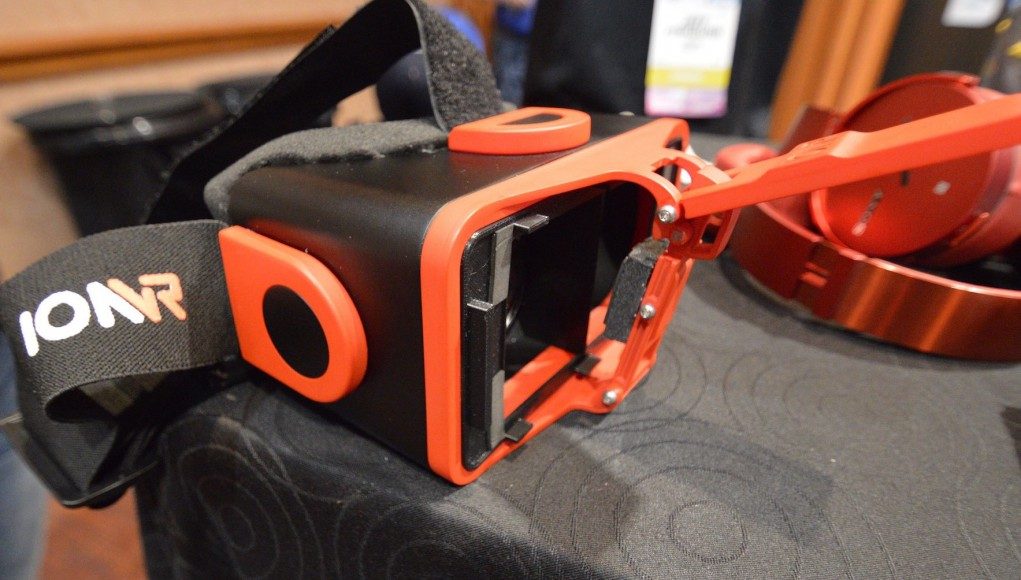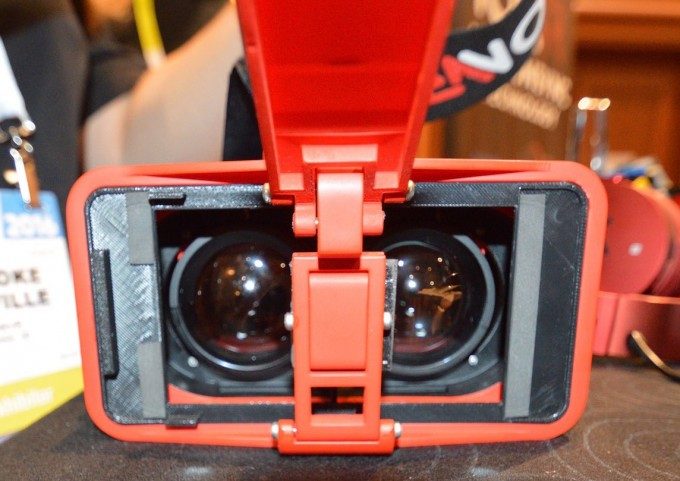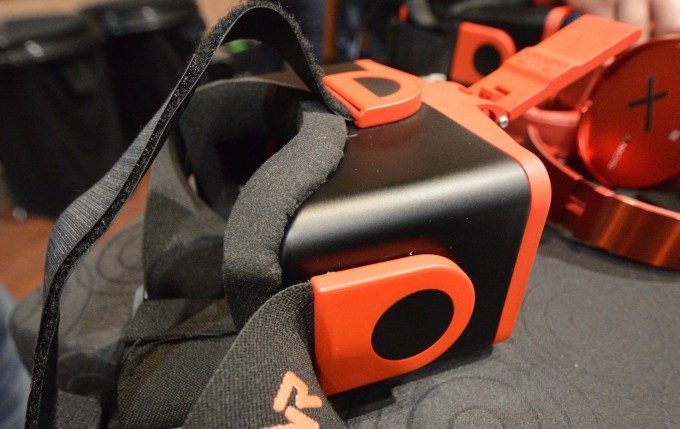ionVR is a smartphone based VR headset that augments the standard Google cardboard experience with custom optics and electronics to drastically reduce latency. We go hands on at CES to see if it actually works.
VR smartphone adapters in my experience deliver, putting it politely, a mixed bag in terms of experience. The variance in IMU quality for motion tracking and the power of the phone used to drive the experience mean the end result can be sub par at best.
The team at ionVR know this but loved the openness that the Cardboard platform, built on Android, gives you. So they set out to design a headset to resolve the issues inherent in the smartphone hardware by building custom electronics and a software abstraction layer that, with an additional few lines of code in the original cardboard application, can greatly enhance the experience.
If this sounds like I’m speaking in technical generalities it’s because I am. The reason for this is that ionVR is being very tightlipped when it comes to precisely how the “magic” aka Motionsync as they put it is implemented. So, without any technical details to mine, I was left with one question: does it work?
Based on a very limited test case, it seems it actually might.
Using Gear VR as a mental benchmark, being one of the few ‘active’ VR headsets with onboard electronics used to augment the mobile phone hardware, ionVR in terms of latency comes surprisingly close in the limited test I tried. That test was a monoscopic 360 video, played on a modified media player.
As the movie started, I did my usual checks; slow, deliberate head movements followed by more staccato, quicker motions – trying to gauge that telltale lag found in most cardboard implementations. With the exception of occasional judder, the response time (the old ‘motion to photons’ metric) was extremely low – at least by my perception. Whilst there didn’t seem to be any sort of low persistence of vision in place (this wasn’t super silky smooth as in GearVR), the experience was extremely comfortable and reasonably lag free.
If I had to guess, the ionVR hardware includes much higher quality sensors for rotational head motion tracking, scanning at a far higher frequency. The aforementioned required code may simply pipe sensor information from the ionVR IMUs into the applications input data stream, presenting more accurate information. This is purely ignorant guesswork from a non-coder of course, but it seems plausible to me. Then again, in ionVR’s promotional material, they make a big thing about the optics being key to the “magic” as they call it. So, I’ll quit guessing whilst I’m ahead for now.
 The team claim that the system will work its magic on both Android and IOS based systems, an impressive claim and one I’m unable to corroborate as my demo was with Android only.
The team claim that the system will work its magic on both Android and IOS based systems, an impressive claim and one I’m unable to corroborate as my demo was with Android only.
Elsewhere, ionVR tries to tackle other issues inherent with smartphone adapter headsets, namely there are so many different phones out there in theory capable of rendering VR imagery, in al different shapes and sizes. ionVR’s solution is to make the phone harness pluggable, so as hardware evolves over time, you can simply purchase and snap-in a new holder and away you go – that’s the theory at least.
The ionVR team hinted that we’re likely to hear more details about ionVR as CES kicks off proper later in the week. Right now, you can pre-order the headset (no phone included) for a cool $229, an indication just how much additional components are onboard versus your common or garden cardboard case. It’s a steep price for sure, especially considering GearVR’s $99 asking price for it’s consumer edition. However, to compare the two directly would be unfair. Whereas GearVR is tightly bound to a single manucfaturer’s line of smartphones, ionVR claims to move with your phone upgrades, no matter which flavour you opt for.
We need more time with more combinations of hardware to verify this of course, but the team certainly seem confident in their claims. We’ll keep an eye on ionVR as it evolves and report back what we find.









